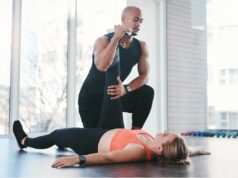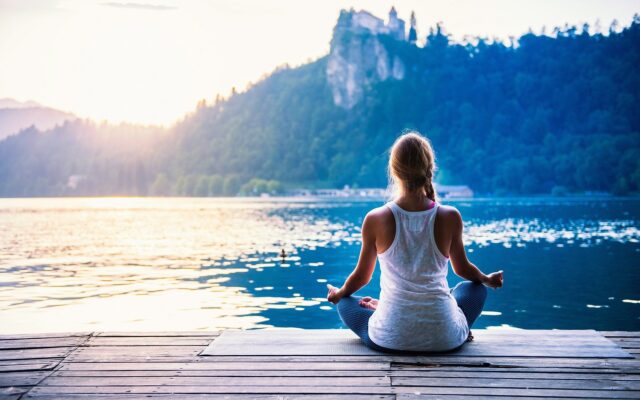
Yoga as a practice has become very popular, especially in the past two decades. This is due to its proven long-term health benefits, the ability to help with a variety of chronic issues such as back and neck pain encourages flexibility, promotes calm and relaxation, and there’s virtually no special equipment needed.
Yoga can be done on your own at home, or in a group at a studio with an instructor leading the way. It’s fairly easy to get yourself in the swing of things, and compared to heavy-duty exercise equipment, a pretty affordable way to get healthy and feel better.
That being said, no matter what kind of yoga you plan to do – be it Vinyasa, Hatha, etc. – you do need a pair of comfortable pants and a smooth, comfortable surface on which to practice.
There are a variety of ways to help improve your grip without aggravating pressure points in your body, and these experts recommend a variety of flooring, from vinyl to wooden planks that help alleviate pain. No fear, you do not have to hire experts to install new flooring in your home, you can do most of the work on your own. But first, let’s explore the best surfaces for you to discover your inner yogi.
1Grass
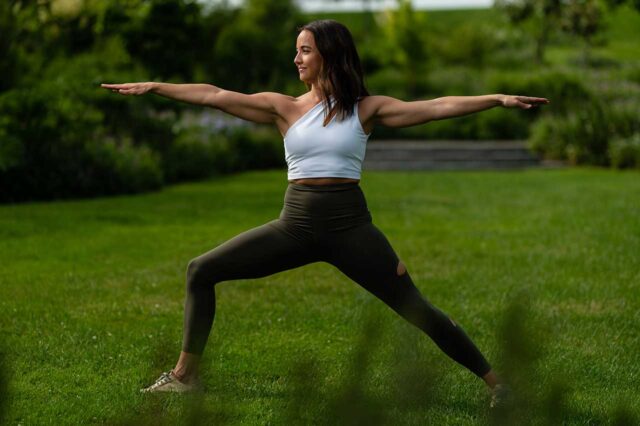
There’s a reason why so many yoga retreats or workshops take place outdoors. Of course, breathing fresh air and looking at a blue sky will help to enhance your yoga practice in different ways, but yoga has been practiced in the wide open for hundreds of years.
This is because grass is never too slippery – unless it has been raining, of course – or too hard. The surface is soft and you can comfortably practice barefoot. The standing poses and more challenging seated ones are easier to tackle on grass. While things might get a bit messy, it’s nothing a little soap and water can’t fix.
2Animal Skins
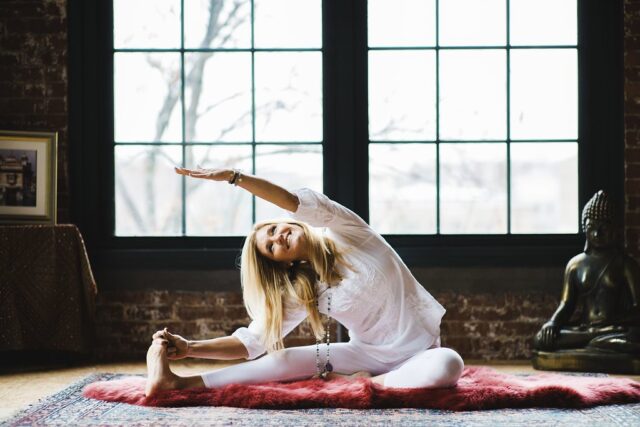
This is perhaps a bit strange and we normally wouldn’t recommend this right off the bat. But ancient yogis also used strips of cowhide leather as a surface when they could not practice outdoors. It makes sense: the surface is soft but not slippery, and the temperature would attune itself to your body’s, so it is neither too cold or too hot.
On the off-chance you might have access to a tannery, or have one of those slightly kitschy, rustic types of leather rugs, then this is maybe one to try. We do recommend you stick with cowhide though.
3Carpet
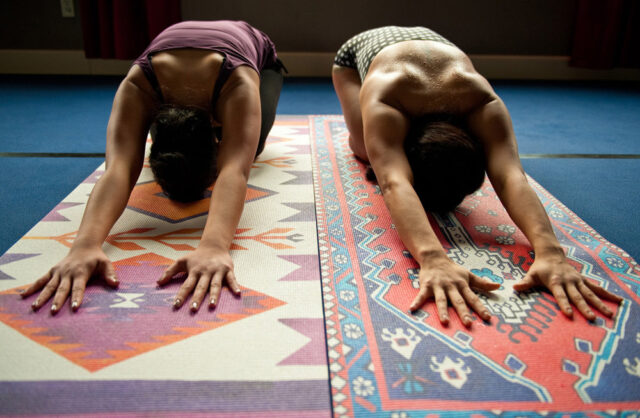
Well, this truly depends on how soft and plush your carpet is. If you have a carpeted floor that is not made up of the plasticky sort of fibers that were the bane of everyone’s existence during the 1970s, then it could work perfectly.
The most important thing to remember when practicing yoga is that you need to protect your body’s sensitive areas from contact with unpleasant and rough surfaces. If you are wearing a good pair of leggings and shirt, then a carpeted surface can help you practice with ease and will not be too disruptive.
4Wood
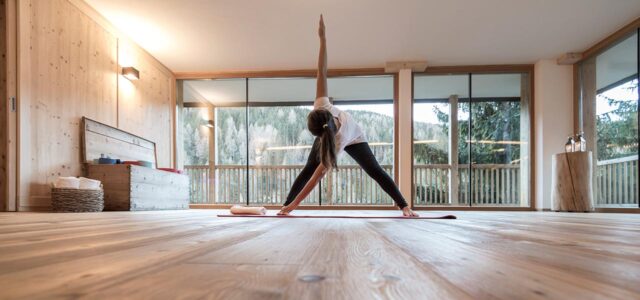
Classic, hardwood floors don’t go out of style. Besides the beautiful look, the smooth surface is highly utilitarian. Especially if you are in a place that isn’t too humid or has “wet”, tropical temperatures. You can comfortably practice yoga on most hardwood floors, provided that they are finished properly so as not to cause splinters.
On the flip side, you also don’t want to use a surface that is too slippery. Some hardwood floors are finished almost akin to ceramic or marble floors, which are absolutely terrible to do yoga on. So, exercise caution.
5Vinyl

Vinyl is a kind of flooring that has been around since perhaps the 1970s. While it can mimic the look of wood floors, it is actually made of a type of fiber closer to plastic.
It provides the best of both worlds in that you can most likely install vinyl planks all on your own, over the existing flooring, so there is no need for external contractors. It is affordable and perfect for practicing yoga. It allows for a good grip, without aggravating sensitive spots in your wrists and shins.
6Stones
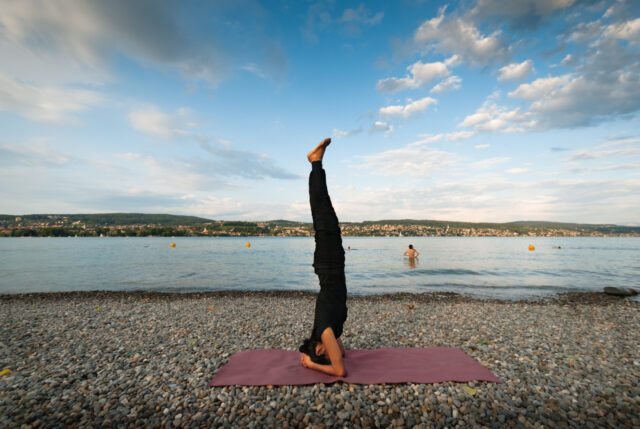
While stone surfaces are generally not recommended, some more experienced yogis prefer them since they provide a good grip.
However, it is important to exercise caution here, since the temperature can vary by being either too hot or too cold, and you need to be on the lookout for a surface that is made up of lumpy stones. If the ground is bumpy, then you run the risk of serious injury.
7Bamboo
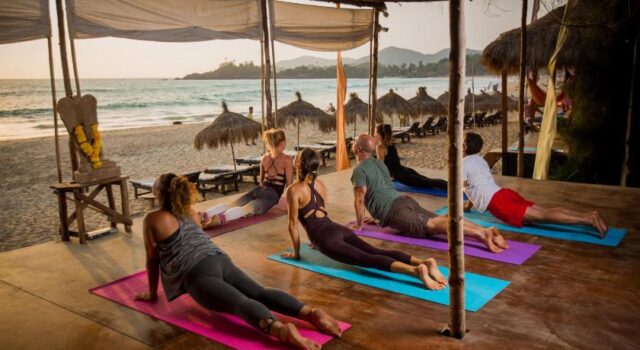
In some ways a close cousin to wood floors, bamboo offers a smooth surface that is not slippery. It is fairly easy to work with and better yet, it is great for the environment.
It is dirt-resistant, which might help if you are concerned about dust when practicing, and it is fairly easy to clean. It’s not exactly the cheapest option, but there are different hybrid models that can be worth looking into if you are budget conscious.
8Blanket
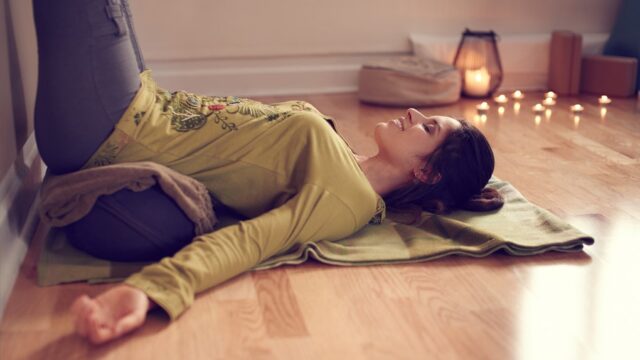
If you already have any one of these surfaces but you are still having trouble feeling comfortable, then you can simply cover the surface with a blanket to avoid pain.
However, make sure that you don’t put the blanket on a slippery surface and it is preferable for you to use a cotton one since that should be much more comfortable.
9Yoga Mat
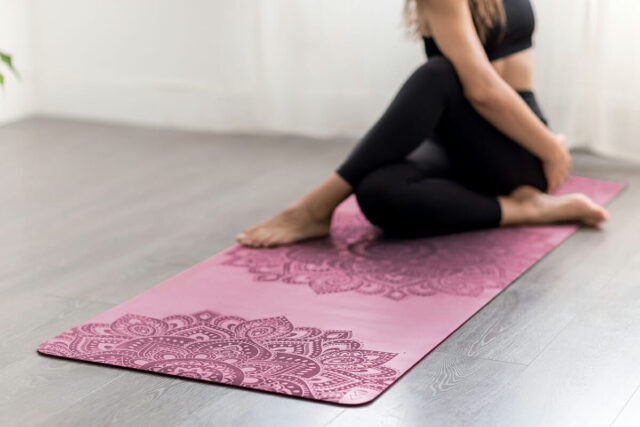
If all else fails, investing in a good yoga mat is the best way for you to enjoy your yoga practice, pretty much anywhere since different kinds are portable and easy to carry. The right one will offer an excellent grip and will prevent you from slipping while working out.
At the end of the day, yoga at its heart remains one of the most accessible exercise routines out there, and it should stay that way.
While different tools and surfaces will provide you with optimal results, you should also feel free to practice yoga anywhere especially when traveling – virtually nothing will make you feel better or calmer.


